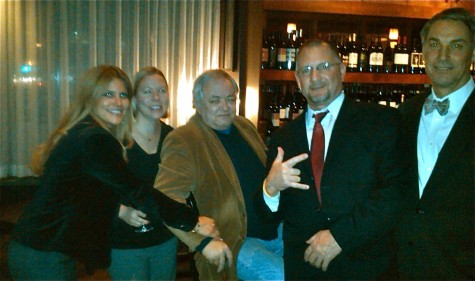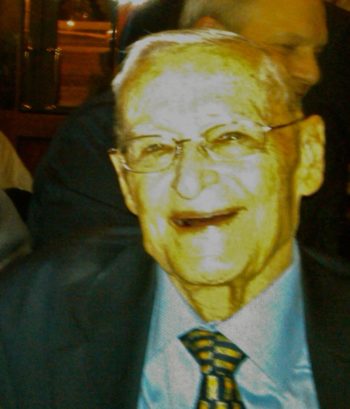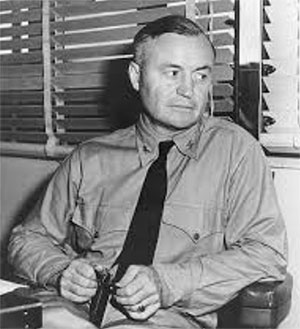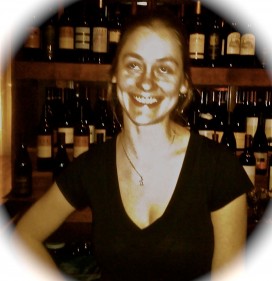Waking Up a Winner

(The Amen Corner in full swing. Left to right, The Lovely Bea, beautiful Jamie, Old Jim, Short Hait Mike and Jon Without on 12 January 2012. Photo Socotra).
So, the Speaker trounced Mr. Romney down in South Carolina, and the circus appears set to continue into the slightly less dark month of February. I don’t know what is next. I suppose I should go and check. I used to see the Speaker around town, the last time on the sixth deck of the Original headquarters Building at Langley where apparently he was dispensing wisdom.
I was thinking about that, and the fact that any morning I wake up, I consider myself a winner. Our pal Mac has seen these election carnivals down through the years, actually serving Franklin Delano Roosevelt and all the rest through Ronald Reagan. I should have asked him the last time I saw him at Willow about the first President he could remember being in office. I doubt if he can remember Warren Harding and his less-than-star turn in the Oval Office, but you never can tell.
I will write down the question and hope it helps me remember for our next session. He can certainly remember when the banks closed and there was no cash money in the big cities of Iowa, and people had to get by with a barter economy.
I looked at the stack of cocktail napkins by the computer. Time to finish transcribing the ink on them before I put the coffee cup on them and the history is lost in smears of brown-and-blue stains.
So, just to being you up to speed, the gang is out in force at Willow. Old Jim is entertaining at the Amen Corner; John’s With-and-Without are holding court; Short-Hair Mike and his beautiful associate Jamie were down the bar, and cycling back and forth. West Coast Guy was in town, and things are rocking in the extended-hours of Restaurant Week.

Mac is dressed to the nines, and I am in my usual goofy bow-tie and vacuous look. I am trying to understand how things felt in 1945, after the war ends, and the strange period of sudden peace that followed the most titanic struggle in armed conflict.
“So,” Mac continued, “Sam Frankle was sent out to be the Fleet Intelligence officer- Colonel Twitty had been JICPOC- he got promoted to Brigadier while he was there- but he desperately wanted to be back where the action was. In 1946 that was the Central Intelligence Group- the C.I.G.- which was in the State Department. Actually, it was on Hospital Hill across the street from the Main State building at Foggy Bottom.
“That was the happening place at the time,” I marveled. “What was it like at Makalapa Crater with the war suddenly over?”
“It was great. I stayed at the Junior BOQ- it was where the Chapel is now. There was a mess where you could have all the food you wanted, fresh vegetables and everything.”
“You only had K-Rations on Guam, right?”
“Yes, and it was horrible. To this day I can’t stomach the idea of the Pear Pie they made out of the crackers and tinned fruit.” Mac shivered at the memory. “That and the Spam that they cut to look like pork chops and breaded before frying. That is why we went to the Air Corps side to watch the bombers take off. The Air Corps had fresh milk. That was something.”
“What then?” I asked. “What was the Fleet doing?”
“Not much intelligence work, I am afraid. There were no staff conferences like during war. Admiral John Towers came in behind Fleet Admiral Nimitz, who was going off to be the Chief. I was the OIC for the change of command, which happened down at the foot of the crater on an aircraft carrier we moved there for the occasion. We had an inclement weather plan to hold the ceremony in the hangar bay, and it was a good thing, since of course it rained.”
“If you were the acting Fleet Intelligence Officer, wasn’t that a lot of responsibility for a Lieutenant?”
“No, not so much. For most of the War, Eddie Layton just had his deputy, LCDR Hudson. They did get a 24 hour watch set up though, but it was just four or five communications guys to cover messages and operate the SIGTOP.”
“Boy, is that a change form a Navy that has more Admirals than ships. What was SIGOP?” I asked. “A secure teletype?”
“Basically,” he said, taking a sip of Racer 5 Lager. “It was a machine that cut a punch-tape in plain language that you ran to produce an enciphered version.”
“Sounds like the tapes we used to cut at he Fleet Ocean Surveillance Information Facility, Pacific,” I said. “A secure teletype, I forget what the nomenclature was. KG-86?”
“Don’t know,” said Mac. “But I was the one who could type, and so I used it most of the time. You will be interested to know that the technology never went out of date.”
“How do you mean,” I said, scribbling frantically. “The incoming messages were processed exactly the way they were on the Moscow Hot Line. We were hooked up to the ECM, the local intercept station. The operators of the Radio Analysis Group Forward were known as RAGFOR. They copied mostly air intelligence information. I hang the cypher wheels and setting. I think there were two books of settings, if I recall properly, and connected Estimated, JICPOA and FRUPAC.
We were apparently on Guam again, and I made an “up arrow” next to the notes to signify that it would have to go someplace else. “You had a wine mess on Guam, right? They did not expect you to stay sober like they did in Iraq under General Order #1.”
“Of yes, completely true. When they sent me to Yokosuka just after the surrender, I took a couple bottles of Three Feathers whiskey to take to our intelligence officer forwad, but I could not find him.”
“The whiskey is what you traded that young Marine for the main battle flag of the IJN heavy cruiser Nagato, right?”
“Yep. I took the small one, but he had four, two big and two small, and I bet I could have got all of them for that bottle of liquor.”
“That is the one that you donated to the Office of Naval Intelligence to display outside the auditorium at Suitland, right?” Mac nodded. “If that is one of the small ones, the big ones must have been huge,” I said with a note of wonder.
“Probably right, but remember, there was a time when seeing a flag at a distance was important.”
“Like the ones at the car dealerships here,” I said, writing. Then we talked about his oncologist and what an increasing PSA score might mean, and the ways of medicine. The lovely Bea came over and gave Mac a hug, and we veered around again to Pearl Harbor and 1946.
“Well, by that time Bill Post was in the seat, and we cooked up a set of temporary alternate duty (TAD) orders to get me back to Washington. We didn’t hear much out in Honolulu, and I wanted to see what might be happening in Navy, and what opportunities there might be. I had the idea I might stay in the Navy, since the biggest promotions list in the history of the service was coming up, and I thought I might make Lieutenant Commander.”

(Then-Captain Forrest Sherman, whose encounter with Mac at Main Navy changed a lot of stuff. Photo USN).
“That was the trip where you saw Admiral Forrest Sherman in the passageway at Main Navy, right?”
Mac nodded. “Yes. The point was to walk around to all the offices and see what was up. Remember, until Admiral Sherman told me to apply for the Board that was going to select new intelligence officers I was still a Deck Officer.”
“Right, of course. Even though you had been doing nothing but intelligence or cryptologic work through the whole war.”
“They kept trying to send me to sea, but they never made it. Main Navy was down by the reflecting pool on the mall. The entrance was on Constitution Avenue. During the war, they added a fourth floor to all the wings of the building, and a “zero” wing on the 17th Street end of the building.”
“I saw it when I was a kid, and Dad drove us down in the Rambler station wagon. Didn’t Dick Nixon order it knocked down?”
“Right you are, but it was much bigger then than it would have been when you saw it. War and Navy Buildings were erected in the rear of the main building. Temporary offices L, K, J, and I were across the reflecting pool, and there were footbridges to get across.”
“They have a picture from that era at the Army-Navy Country Club. It looks really strange.”
Mac nodded. “I had been up to talk to the Detailer at the Bureau of Navigation in the Third Wing- that is the office where BuPers was at the time- and Sherman must have been coming from the Aviation offices in the second wing.”
“Our admin assistant at BuPers was Millie Doyle. She always told us she started out at the Bureau of Navigation. The Navy had not moved to the Pentagon then, I take it.”
“No, the CNO was still in the Second Wing, and the Director of Naval Intelligence was in the 7th Wing, on the first and second decks, and BuNav was in the Third wing. Admiral Sherman must have been coming from the Aviation offices. He looked at me with those steely blue eyes. He was at all the briefings I did on Guam. During all of them I could never tell what he was thinking. Impassive guy. But that day he recognized me and called me by name. He said “We need people like you for Air Intelligence.” All the lawyers he had recruited for those jobs got out to go back to private practice as soon as they could, and Sherman had to start all over.”
“So that is when he told you to apply for Naval Intelligence?”
Mac smiled. “Yes. He told me to go down to the 7th Wing and fill out an application with Commodore Wren.”
“So the rest is history,” I said, taking a sip of white wine.
“It is all history, now,” said Mac with a smile. “Almost, anyway.”

(Elizabeth-with-an-S. Photo Socotra.)
Copyright 2012 Vic Socotra
www.vicsocotra.com
